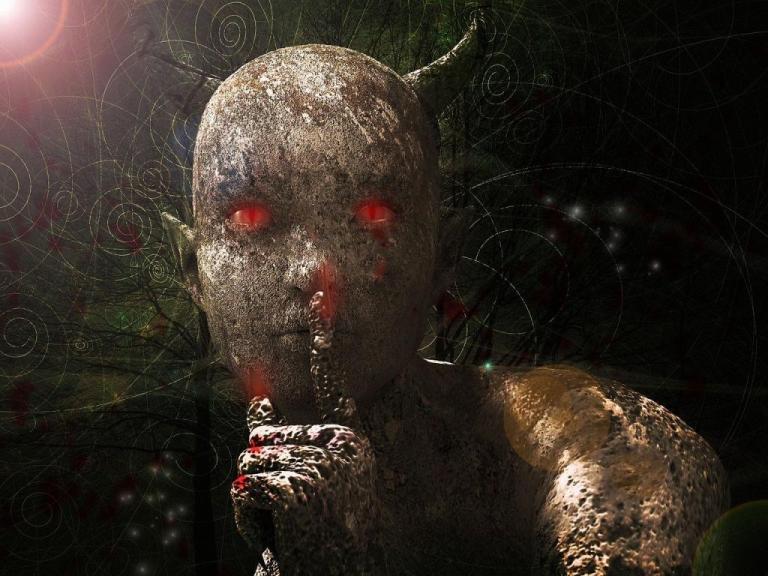“Witchcraft? Somebody having a little dabble? Yes, I would think so. Or did you think I was going to say, no no no, it can’t happen here? I bet there are lots of remote spots where remnants of witchcraft are still practiced.” –Stephanie Bax
“The witch rituals, for example, were so very old and strange that they had been ultimately terrifying to the superstitious medieval world. Now anthropologists understood them as a remnant of human prehistory. The Old Religion, the way of the earth.” –Whitley Strieber
There are a variety of things I enjoy about Wicca, but I think my favorite is that every year, it gets a little younger.
Back in the early 2000s, the main complaint about Wicca was that it was “only 50 years old.” (Which, if we’re going to mark the “birth” of Wicca with the publication of Gerald Gardner’s Witchcraft Today in 1954… okay, sure.) But 20 years later, people are still yelling about Wicca being “only 50 years old,” and a few months ago, I came across someone claiming that Wicca wasn’t a valid religion, because it was “less than half a century old.”
Which would mean that Gardner “invented” Wicca around six years after he died.
While I’m admittedly not great with numbers, the math seems kind of off here.

“Traditional” Witchcraft, on the other hand, is getting hoarier by the day. The Sense Fairy used to tell anyone who would listen that her Tradition predated Wicca by several hundred years, and on at least three recent occasions, I’ve heard people describe TradCraft as “thousands of years” older than Wicca.
Thing is, Wicca and TradCraft share the same roots. Gardner built on what he’d received from the coven that initiated him; Doreen Valiente tossed out the stuff Gardner added and replaced it with her own material; and Robert Cochrane (more than likely a Gardnerian initiate himself) took the standardized ritual framework and incorporated Celtic mythology and imagery from Robert Graves‘ The White Goddess.
The concept of Witchcraft is old, but the majority of methods by which it’s practiced today are, in the grand scheme of things, decidedly new.
And you know what? That’s okay.

Magic doesn’t have to be old in order to work. I mean, hell, the Chaos Magic approach has only been around since the late 70s, and it works just fine. There was a time in the not too distant past when Witchcraft was generally understood to be the revival of a pre-Christian religion, and in some ways, it sort of is. But, more relevantly, both Wicca and TradCraft are collections of specific practices designed to achieve specific results.
It gets a bit confusing, because initiates of traditions that fall under the British Traditional Wicca banner — Gardnerian, Alexandrian, New York Wica, Central Valley Wicca, Protean, Georgian, Blue Star, Mohsian, and Algard, along with the Minoan Brotherhood and Sisterhood — are all definitely practicing Witchcraft, whereas non-initiatory Wicca seems focused on religion, sometimes without any Witchcraft at all. And there was a period where basic Wiccan practices were taken out of context and applied to a myriad of paradigms, which is why, in the 90s, we saw the rise of (I am not making any of these up) Celtic Wicca and Druidic Wicca and Norse Wicca and Saxon Wicca and West Country Wicca and Scottish Wicca and Irish Wicca (all hail the Potato Goddess!) and Greek Wicca and Egyptian Wicca and Faery Wicca and Victorian Wicca and Gay Wicca and Angel Wicca and Dragon Wicca and Unicorn Wicca, among other permutations.
But if we push all of those variations to the side and set British Traditional Wicca next to Traditional Witchcraft (the Clan of Tubal Cain, the 1734 Tradition, the Regency, the Roebuck, etc.), what we’ll find is some cosmetic differences on top of very similar ritual structures first written down by people who called themselves Witches back in the 1930s.
And this is also okay.

I do not doubt for a minute that there were practicing Witches prior to 1954, and at least some facets of their craft would probably be recognizable to us today: The 10th-century Penitentials, for instance, listed drawing a circle about oneself with a sword as a sinful Pagan practice, and in the late 1800s, Lady Wilde (Oscar’s mom) collected folklore on the ritual uses of black-handled knives. So, y’know, some of the things we do in the modern era have origins in antiquity. And that’s great, but it’s also not really a necessity.
The fastest way to render any form of Witchcraft useless is to make its age a deciding factor in whether or not it’s legitimate. It would be like saying, “Oh, I can’t read with The Liminal Spirits Oracle, because it’s not as old as Tarot,” or “Freezer spells don’t work, because Renaissance cunningfolk didn’t have indoor refrigeration.” Witchcraft evolves — it has evolved, and it will continue to do so. And we can put all of our energy into complaining about the iterations of Witchcraft that we think are too young to take seriously, in the hopes that people will take us seriously; or, we can focus on cultivating our personal practices without comparisons and directing our own evolution.
One last, quick story before I wrap this up: Many years ago, a scholar friend gifted me a mimeographed copy of a real-and-for-true, “pre-Gardnerian” grimoire of Traditional Witchcraft. It was pretty amazing. Lots of excellent craftiness inside of it.
And on the very first page, in a lovely calligraphy, were the words Book of Shadows.

Sometimes, the things we think have been around for lifetimes turn out to be modern innovations. And sometimes, the things we assume are recent creations have existed in one form or another for longer than we ever would’ve imagined.
And more often than not, it doesn’t matter either way. What matters is what works for us individually; what makes us feel like the Witches we’re meant to be. The rest is just mutable history.


















